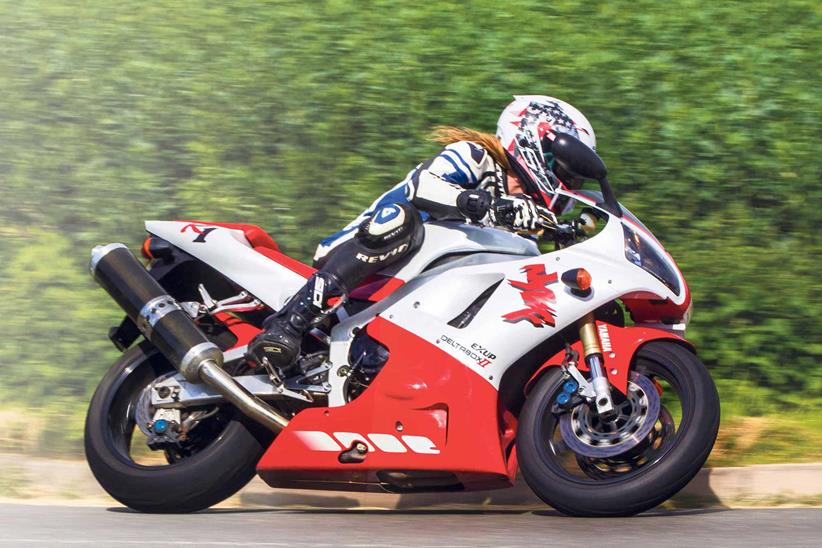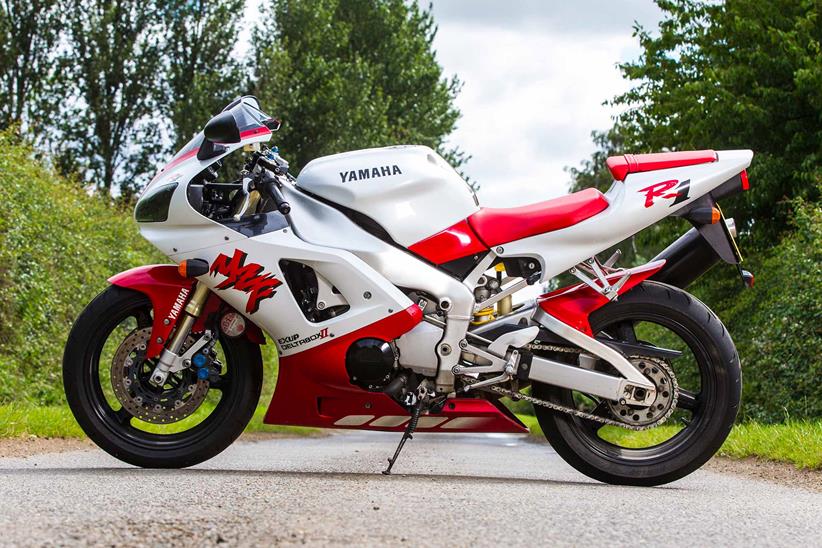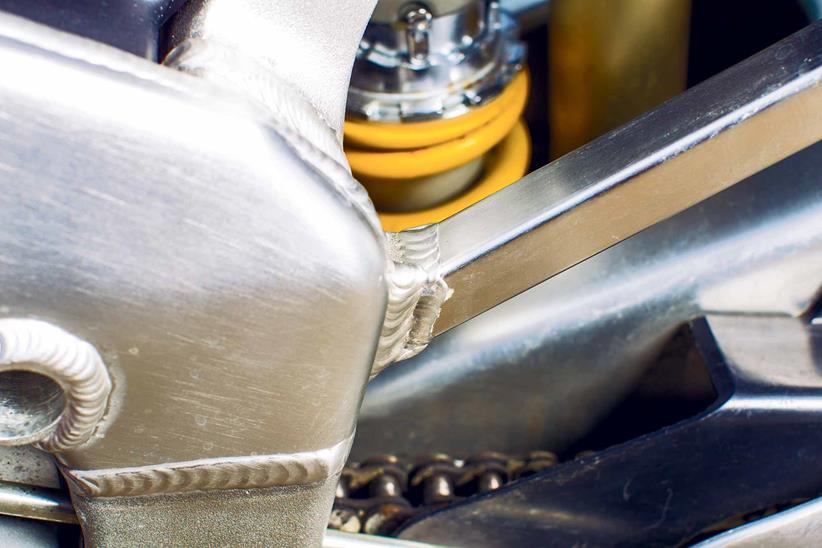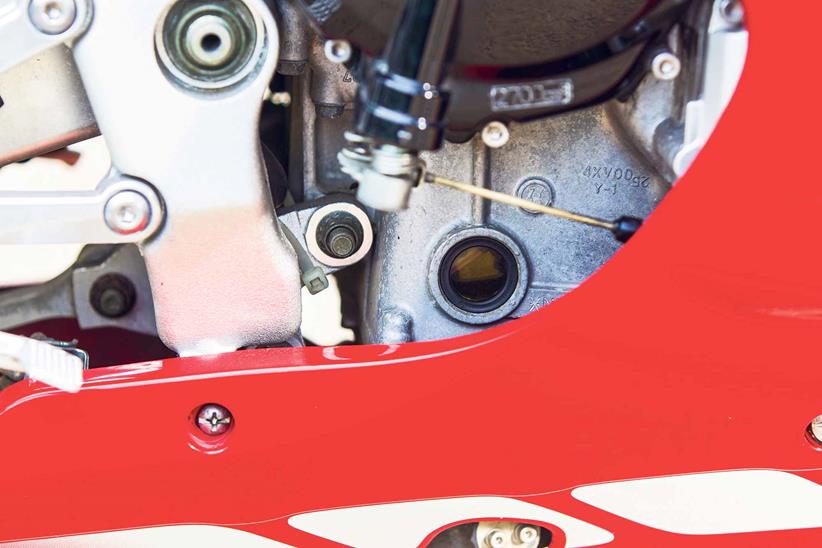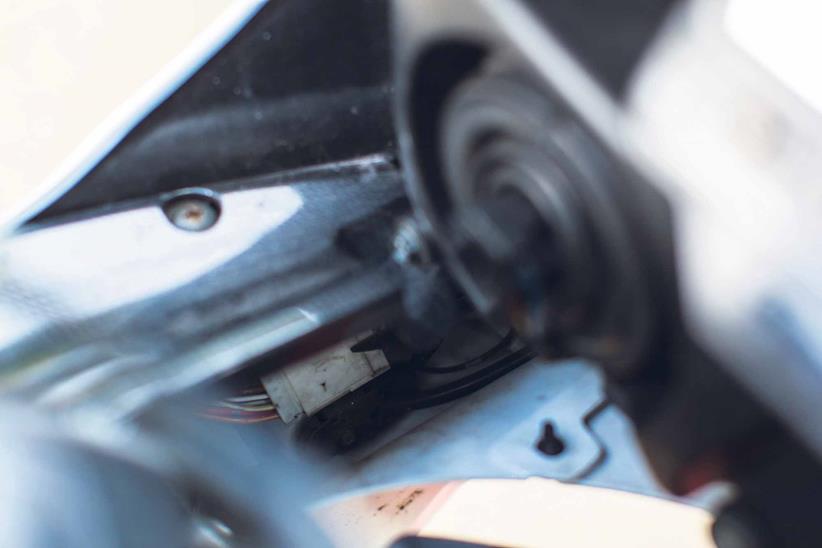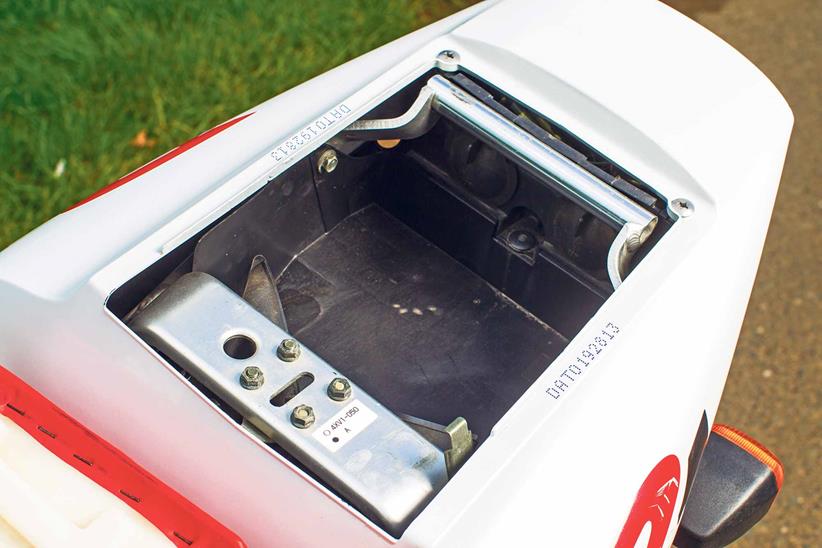Revisited: 1998-1999 Yamaha R1
In 1997, we rode the then new Yamaha R1 at it’s launch and said it was the ‘most outrageous bike you’ll ever ride until the next century’.
Speaking on the 1998-1999 model, we added, “Yamaha’s staggering R1 is twice as good as all the hype and takes supersports bikes to a new level! Forget Honda FireBlades, Kawasaki ZX-9Rs and even Ducati’s 916SPS, the new 1000cc Yamaha will chew them up and spit them into the hedge without breaking into a sweat. It has everything needed in a modern sports bike – and more.”
But what is the Yamaha R1 like now?
Fifteen years ago I had a poster of the 1998 R1 – red and white of course – on my wall, and my ’98 R1 model was on the front row of my vast collection of bike miniatures. They were the bee’s knees according to the motorcycling press and I badly wanted my dad to get one. He got a Thunderace instead. Close enough.
Since then sportsbikes and motorcycle technology as a whole has moved on incredibly fast. Superbikes now boast 200bhp and space-age electronics. Compared to these modern-day missiles, which seem to get smaller each year, the R1 feels relatively roomy, with plenty of space for my lanky legs and not too much weight on the wrists.
Directly beneath my head is a lovely smooth metal tank. No angular plastic covers here, the lines of the bike are simple and all the better for it. This example is standard and emits a quiet, almost stealthy hum at tick over. The dash is clean, basic and easy to read. The big analogue rev counter sits next to the digital speedo which also includes odo or trip readings.
Exploring the engine
The clutch has a reassuring weight to it and the bike slots into first gear effortlessly. The 20-valve, 998cc inline-four is silky smooth – one of those engines that makes riding fast seem much easier than it should be.
Torque is spread evenly across the entire rev range, but things really come alive at 10,000rpm all the way to the redline at 11,500rpm. Despite the known problems, the gearbox on this example feels slick and effortless. It’s a bike that certainly doesn’t feel almost 20-years-old.
![]()
Time to meet your heroes
Everything feels smooth and progressive. The brakes need at least two fingers, but they offer great feel. The suspension is well-suited to fast, smooth A-roads, but on undulating B-roads has a tendency to get a bit out of shape and shake its head under acceleration over bumps. Keep your wits about you or it could bite.
They say you shouldn’t meet your heroes, and I’m not a fan of sportsbikes, but the R1 just makes everything so easy. There are no vibes, knee ache or surprises that mar the experience of riding it, and there’s even a huge space under the pillion seat for a couple of my favourite avocado sandwiches.
Common faults explored
The most common problem on this model relates to first and second gear. The gearbox is weak and either changing gear too slowly or abusing the gearbox too much can cause issues. Thankfully it’s not an overly expensive or complicated fix.
EXUP valves can seize. If this has happened the tacho needle will swing round to 7000rpm on start up before returning to the correct position.
Extras
This example is standard – just as you’d want it if you were looking to make a profit when you came to sell it. Most bikes of this age and era will come with plenty of extras; aftermarket exhausts, tinted screens, tail tidies, race rep paint schemes. The more standard the better.
![]()
The Mechanic: Mark White is the owner of M&M Motorcycles in Stamford and a huge fan of R1s.
“The main faults are the stators – they pack up and the gearboxes are incredibly weak, but just first and second gear. Do not let anyone charge you more than £450 to do the entire job because it’s really easy. It can either be a sign of them being abused or ridden too slowly, if that makes sense. Changing gear too slowly is more likely to cause issues than them being abused.
“Check the wiring loom – it’s a white plug where the clocks and the main headlight plug into the main loom. The power feed there corrodes and all of a sudden you can lose power to the lights and the dash.
“The EXUP valve needs to be nicely adjusted or else the tacho needle swings round to 7000rpm – it’s called the tacho tango and it’s basically a fault code.
‘I’ve never known an oil pump fail’ – Mark White
“The oil level sensor on these is just that, it’s not an oil pressure sensor. They’re a float inside a plastic cage and over time the cage deforms due to heat. The float gets a bit sticky inside, which means the oil light comes on every now and then even though it’s got loads of oil and the pump’s working. I’ve never known an oil pump fail.
“If the oil light comes on either you’re really good at wheelying or the float has stuck in the cage. Yamaha redesigned the cage later and made it metal instead of plastic but it still plays up.
“It’s hard to abuse them because, apart from the gearbox, they’re a really strong motor. Some of them have selector detent spring issues, but that’s quite rare. The shock will most likely be past its best. It’s not that practical to rebuild them so go for an aftermarket one from a firm such as Nitron.
“A general Yamaha thing from that era is a dodgy ignition barrel –youjustneedtoputabitof pressure toward the outside of the barrel as you turn the key. It’s just badly designed barrels, but it’s not a big issue.
Aim for a red and white one
“I’d be on the lookout for the red and white one, weirdly. A lot of people didn’t like them, they preferred the blue one, but for me the red and white one is what made them iconic. With around 20,000 miles on the clock I’d just give it a good look over – no more than any other secondhand bike of that age. I would want to test ride it and check the gearbox but I know how easy it is to sort the gearbox so I wouldn’t be put off at all by gearbox problems.
“The wheel finish isn’t very good. Cleaning them with something like WD-40 can actually remove some of the paint so you just have to be a bit careful. They’re getting on a bit, after all.”
And if you’re feeling inspired, have a browse for your next bike on MCN Bikes For Sale.
